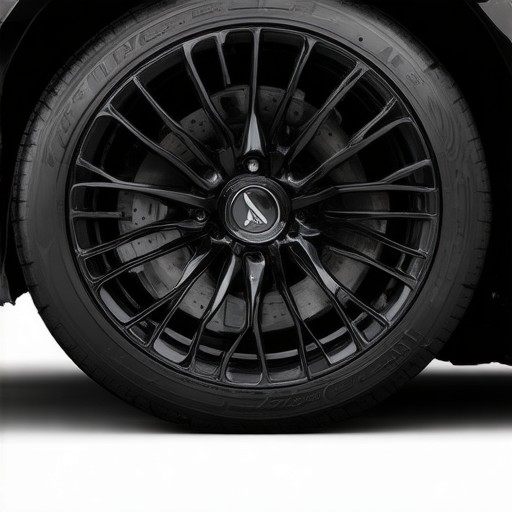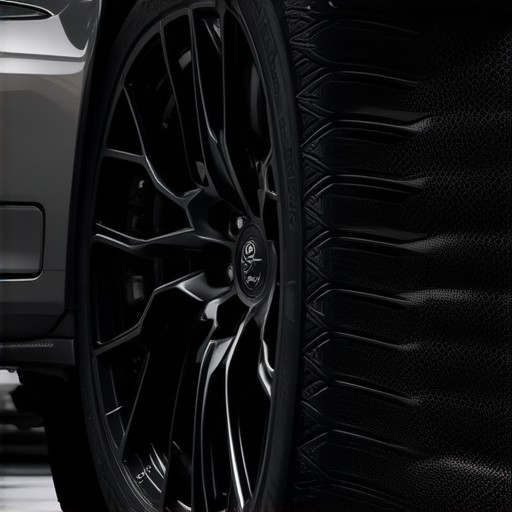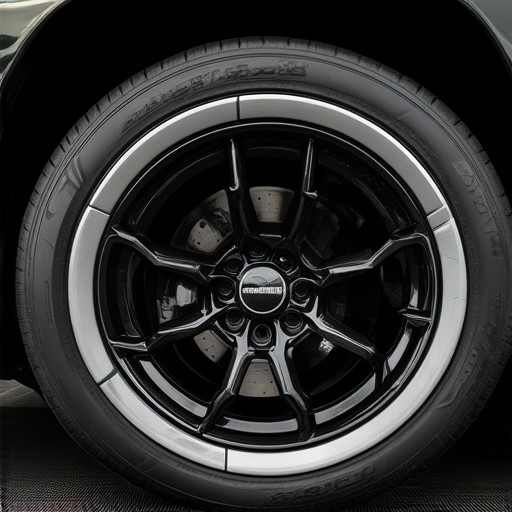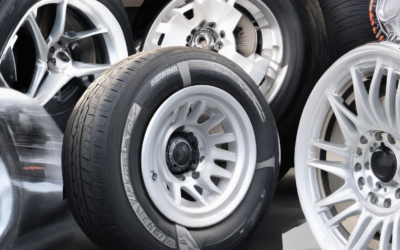Understanding the proper rim diameter of your vehicle is crucial for ensuring optimal performance, safety, and aesthetic appeal. Whether you’re a car enthusiast, a truck owner, or someone looking to upgrade your vehicle’s wheels, knowing how to accurately determine the rim diameter is essential. This comprehensive guide will walk you through the intricacies of rim diameter, provide valuable tools like calculators and charts, and offer actionable tips to ensure your measurements are precise and reliable. From understanding the basics of tire size codes to leveraging tire size calculators, this guide has everything you need to master the art of measuring and comparing wheel sizes.

How to Determine Your Rim Diameter
Your rim diameter is crucial for various aspects of vehicle maintenance and performance. Here’s a step-by-step guide to finding it:
- Check the Wheel Itself: The diameter is typically stamped on the side of the wheel, usually near the bead where the tire sits.
- Look for Etching or Markings: Custom wheels may have the diameter etched onto the face of the rim.
- Consult Your Vehicle’s Documentation: Many vehicles come with an owner’s manual that lists tire specifications, including diameter.
- Visit a Specialty Shop: Experts at shops like Discount Tire can measure and verify the diameter for you.
- Use Online Tools: Some platforms offer calculators or guides to estimate wheel size based on existing measurements.
For precise measurements, consider visiting Incubus Wheels for professional assistance. Their team can provide accurate readings and recommendations tailored to your vehicle’s needs.
Formula for Rim Diameter
The formula to determine the effective rim diameter (ERD) of a wheel involves measuring the spoke length and the bend-to-bend distance of the rim. Here’s a step-by-step breakdown:
-
Measure Spoke Length : Measure the length of the spoke used to secure the wheel to the hub. This is typically provided by the wheel manufacturer or can be found in the wheel specifications.
-
Measure Bend-to-Bend Distance : Use a Bendtobend caliper to measure the distance between the bends on the rim. This measurement is essential for determining the ERD.
-
Calculate Effective Rim Diameter (ERD) : Double the spoke length and add the bend-to-bend measurement to find the ERD. The formula is: [ ERD = 2 \times \text{Spoke Length} + \text{Bend-to-Bend Measurement} ]
For example, if you’re using a 260mm spoke and the bend-to-bend measurement is 48mm, the ERD would be:[ERD = 2 \times 260 + 48 = 568\text{mm}]
This method ensures that the wheel fits properly on the hub, considering both the spoke length and the rim’s geometry. Always verify with the wheel manufacturer or local regulations for precise measurements.

How to Calculate Effective Rim Diameter
To calculate the effective rim diameter (ERD), follow these steps:
- Tools Needed
-
A tire caliper or measuring tool capable of measuring the distance between two spokes or studs.
-
Measurement Process
- Position the wheel so that it is vertical and secure it firmly on a stable surface.
- Place the caliper or measuring tool against the face of the wheel at the 12 o’clock position.
-
Measure the distance between the two spokes or studs where the caliper touches the wheel. Record this measurement.
-
Calculate ERD
- Add twice the length of the spokes or studs measured beyond the rim edge to the initial measurement.
-
Repeat the process multiple times and average the results to ensure accuracy.
-
Considerations
- Ensure the measurement is taken at the correct position on the wheel, typically around the 9-3 o’clock positions for most passenger vehicles.
- Verify the measurement aligns with your vehicle’s specifications to ensure compatibility.
By following these steps, you can accurately determine the effective rim diameter for your wheels, ensuring proper fitment and functionality.
For more information on wheel sizing and compatibility, visit Incubus Wheels or explore resources from trusted competitors like WheelPros and Performance Racing Wheels .

How to Tell If the Rim Is 16 or 17 Inches
To determine if your car’s rim is 16 or 17 inches, follow these simple steps:
- Check the Current Tire Size: Look at the side of your tire where the size is printed. The number typically appears on the sidewall. If the number is 16, your rim is 16 inches. If it’s 17, your rim is 17 inches.
- Measure the Wheel Width: Use a tape measure to measure the width of the wheel across the bead (the part that touches the hub). Press down firmly on the bead to get an accurate reading. This measurement will give you the exact diameter of the rim.
- Compare the Tire Width to the Rim Size: If the tire width seems wider than average, it may correspond to a 17-inch rim. A narrower width typically indicates a 16-inch rim. Keep in mind that slight variations can occur depending on the tire manufacturer and model.
- Verify with a Professional: If you’re unsure, take your car to a local auto shop or tire center. They can measure your wheels precisely and confirm whether your rims are 16 or 17 inches.
Knowing your rim size is essential for purchasing the correct replacement wheels or upgrading your current setup. Whether you’re aiming for a sportier look or simply wanting to match your vehicle’s original specifications, having the right size is key to performance and aesthetics.
How to Determine the Rim Diameter of Your Vehicle
Determining the rim diameter of your vehicle is essential for various reasons, including purchasing new tires and ensuring proper wheel sizing. Here’s a step-by-step guide to finding the correct rim diameter:
- Use a Digital Tire Gauge: The most accurate method is to use a digital tire gauge. These clamping tools provide precise measurements by fitting around the tire’s bead.
- Consult Your Vehicle’s Manual: Check the owner’s manual for specified rim diameter information, as manufacturers often list this detail.
- Explore Online Forums and Guides: Visit automotive forums or guides where enthusiasts share their experiences and tips for measuring rims. Many communities offer reliable insights and recommendations.
- Visit Auto Parts Stores: Stores that sell wheels may have tools available for loan or sale, ensuring you get an accurate measurement without purchasing separately.
- Use Calipers or Rulers Carefully: While less precise, using a ruler or caliper (meant for wheels) can provide a rough estimate, though it’s advisable to cross-reference with a digital gauge for accuracy.
- Consider Professional Measurements: For the most reliable results, take your vehicle to a trusted mechanic or auto shop. Their tools and expertise ensure precise measurements.
By combining these methods, you can confidently determine your vehicle’s rim diameter, ensuring proper fitment for future upgrades or repairs.

How to Determine the Rim Diameter of Your Vehicle
To accurately measure the rim diameter of your vehicle, follow these steps:
- Use a Digital Tire Gauge: The most reliable method is to use a digital tire gauge. These tools clamp onto the tire and provide an instant reading. Ensure the gauge is calibrated for accuracy.
- Consult Your Vehicle’s Manual: Check the owner’s manual or manufacturer specifications for the recommended rim diameter. This can often be found in the vehicle’s dimensions section.
- Measure with a Ruler or Calipers: If you don’t have a digital gauge, measure the wheel’s width using a ruler or a set of wheel calipers. Ensure the wheel is inflated to its normal pressure for an accurate measurement.
- Check Online Forums and Communities: Look for recommendations in online forums or automotive communities. Members often share tried-and-true methods and tools for measuring wheel diameters.
For the best results, combine multiple methods to verify your measurement. This ensures consistency and accuracy, which is crucial for selecting the right replacement wheels or tires.
Conclusion: Accurately determining your vehicle’s rim diameter is essential for maintaining proper tire fitment and overall vehicle performance. Using a digital tire gauge or consulting professional resources ensures you get the precise measurement needed for your next upgrade or maintenance task.


0 Comments